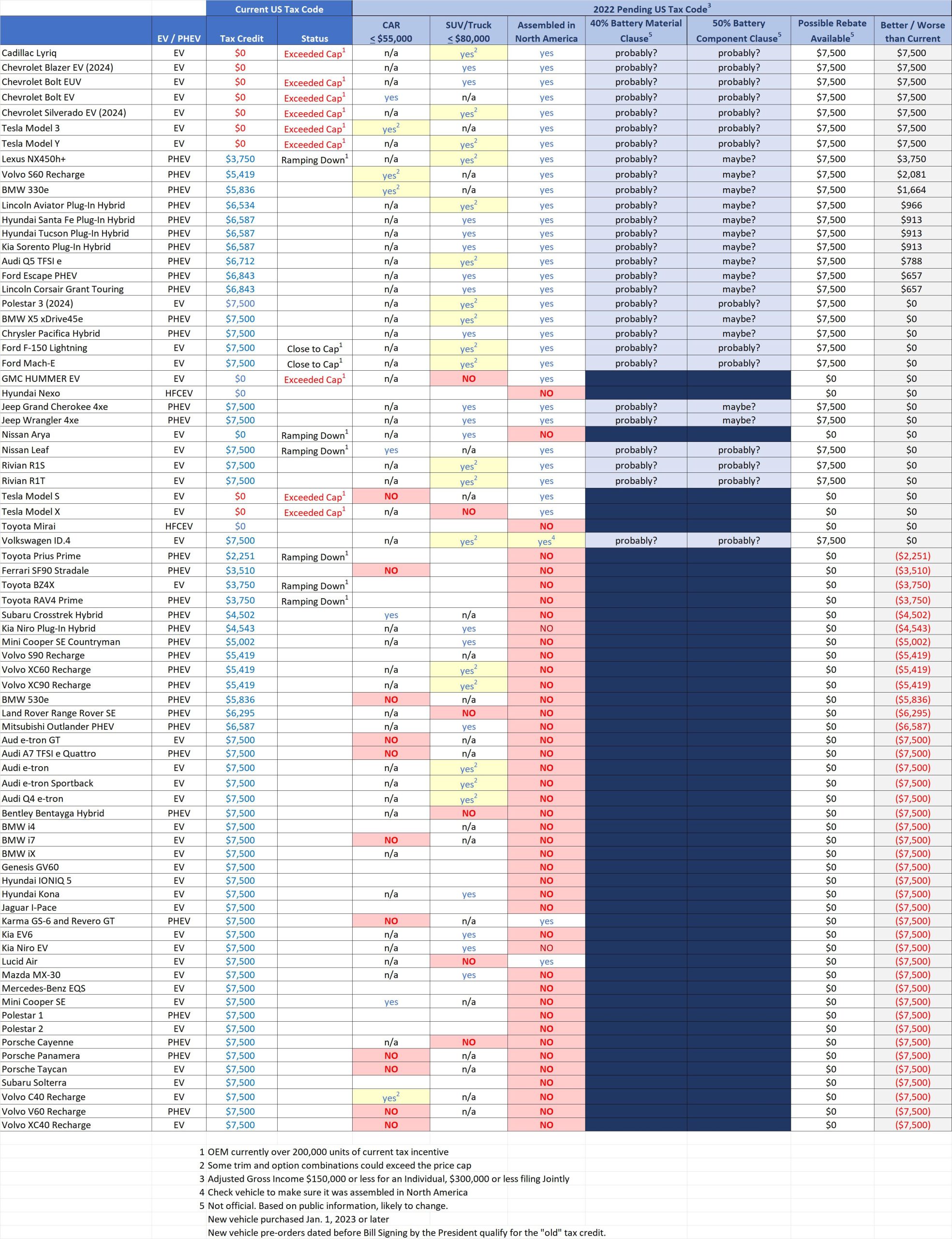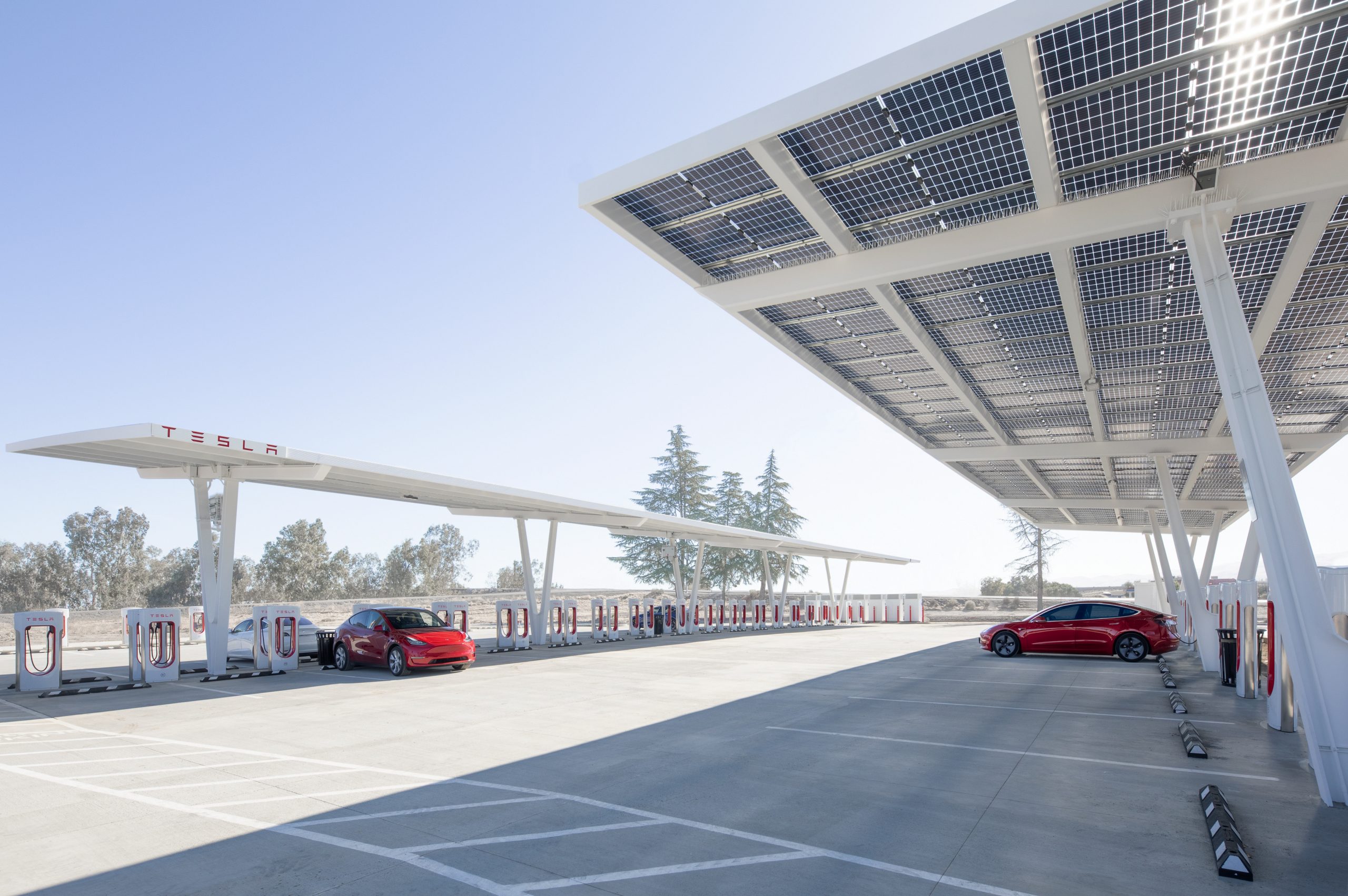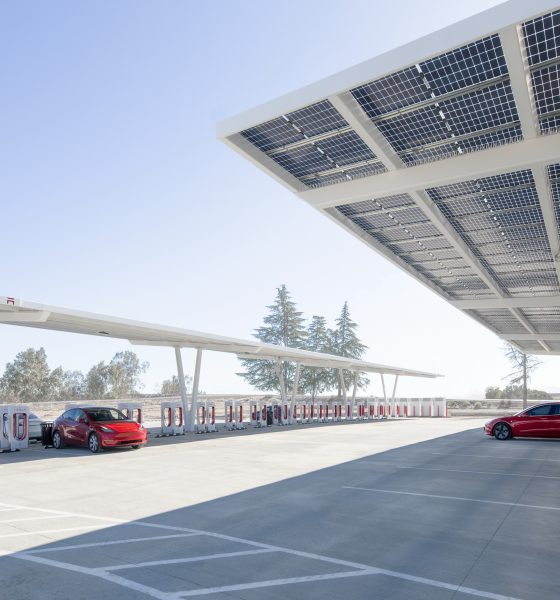With the Climate Bill that includes funding for EV buying incentives approaching its final round of voting and news about possible details on the funding running rampant, I will attempt to consolidate as much knowledge as possible into one place.
First of all, I and others here at Teslarati have written numerous articles covering EV incentives. These articles will help you understand how incentives have been voted on recently and how EV incentives in the US compared to the rest of the world. Some of the most notable include this article about US State level EV incentives, this article about how the “union made” incentive was scrapped earlier this year and this opinion piece about what Elon Musk thinks about EV incentives and how he hopes the US will move away from ICE vehicles.
A personal favorite from outside of Teslarati, Martyn Lee of the EV News Daily podcast has laid out a couple of perspectives from Twitter in one of his most recent episodes.
Martyn does a fantastic job of laying out a couple of perspectives on the EV incentives, how some are proposing to pay for them, and reading from experts examining the bill. One such expert is Tom Randall of Reuters, who has posted numerous Twitter threads on the topic. His most notable is the one linked below, where he covers the basics of incentives, who will qualify, and other notes surrounding the legislative process/votes.
Interesting EV tax credit details in the new Manchin deal: $7.5k credit per new vehicle and $4k for a used EV (or 30% of price, whichever is less). The credits expire at the end of 2032—with no manufacturer caps. A bunch of new limitations include ?1/
— Tom Randall (@tsrandall) July 28, 2022
Some important notes from the thread are that used cars will also qualify for a tax rebate of up to $4,000 (as long as your salary is below $75,000 individually or $150,000 for joint filers), and new cars will only qualify if they are under $55,000, new SUVs and trucks will have to be below $80,000, and used vehicles must cost less than $25,000 to qualify.
For those who need a consolidated explanation of what will allow a vehicle to access the incentive, u/mad691 on the r/Electric Vehicles subreddit has posted a spreadsheet that includes all current plugin models and their possible federal rebates if the bill, in its current form, passes. The sheet consists of the qualifications that manufacturers must meet for customers to access the tax rebate along the top row.
Listed on the left are the current incentives available for each model. Then the following five columns highlight whether the vehicle may qualify in the future under the new proposal. These qualifications would disqualify the vehicle from the incentives. Finally, on the right are two columns that highlight the possible rebate of the vehicle and the change in rebate from the current system (red being negative, black being positive change).

Possible Federal EV Incentives from u/Mad691 on Reddit
While the sheet is not fleshed out completely, especially looking at the battery material clause and battery component clause columns, it can at least give a sense of what vehicles may qualify and which may not. Any of the three middle columns (Car Price, Truck+SUV Price, and Assembled in America) are instant disqualifiers and represent the vast majority of disqualifications from the incentives.
Some surprising results from the table include GM’s offerings that would once again be available for the rebate, the laundry list of vehicles not assembled in the US that would no longer qualify for the tax credits, as well as the long list of PHEVs that will continue to receive the full $7,500 in tax credits despite small batteries and lackluster fuel economy (specifically looking at the Jeep Wrangler 4xe with 14 miles of EV range and the BMW X5 with 30 miles of EV range).
This news should be taken with a huge grain of salt as voting and editing the bill have not yet been completed. However, it can give a basic understanding of what incentives may become available if the bill were to pass.
What do you think of the article? Do you have any comments, questions, or concerns? Shoot me an email at william@teslarati.com. You can also reach me on Twitter @WilliamWritin. If you have news tips, email us at tips@teslarati.com!

News
Tesla China delivery centers look packed as 2025 comes to a close
Needless to say, it appears that Tesla China seems intent on ending 2025 on a strong note.

Tesla’s delivery centers in China seem to be absolutely packed as the final days of 2025 wind down, with photos on social media showing delivery locations being filled wall-to-wall with vehicles waiting for their new owners.
Needless to say, it appears that Tesla China seems intent on ending 2025 on a strong note.
Full delivery center hints at year-end demand surge
A recent image from a Chinese delivery center posted by industry watcher @Tslachan on X revealed rows upon rows of freshly prepared Model Y and Model 3 units, some of which were adorned with red bows and teddy bears. Some customers also seem to be looking over their vehicles with Tesla delivery staff.
The images hint at a strong year-end push to clear inventory and deliver as many vehicles as possible. Interestingly enough, several Model Y L vehicles could be seen in the photos, hinting at the demand for the extended wheelbase-six seat variant of the best-selling all-electric crossover.
Strong demand in China
Consumer demand for the Model Y and Model 3 in China seems to be quite notable. This could be inferred from the estimated delivery dates for the Model 3 and Model Y, which have been extended to February 2026 for several variants. Apart from this, the Model Y and Model 3 also continue to rank well in China’s premium EV segment.
From January to November alone, the Model Y took China’s number one spot in the RMB 200,000-RMB 300,000 segment for electric vehicles, selling 359,463 units. The Model 3 sedan took third place, selling 172,392. This is quite impressive considering that both the Model Y and Model 3 are still priced at a premium compared to some of their rivals, such as the Xiaomi SU7 and YU7.
With delivery centers in December being quite busy, it does seem like Tesla China will end the year on a strong note once more.
News
Tesla Giga Berlin draws “red line” over IG Metall union’s 35-hour week demands
Factory manager André Thierig has drawn a “red line” against reducing Giga Berlin’s workweek to 35 hours, while highlighting that Tesla has actually increased its workers’ salaries more substantially than other carmakers in the country.

Tesla Giga Berlin has found itself in a new labor dispute in Germany, where union IG Metall is pushing for adoption of a collective agreement to boost wages and implement changes, such as a 35-hour workweek.
In a comment, Giga Berlin manager André Thierig drew a “red line” against reducing Giga Berlin’s workweek to 35 hours, while highlighting that Tesla has actually increased its workers’ salaries more substantially than other carmakers in the country.
Tesla factory manager’s “red line”
Tesla Germany is expected to hold a works council election in 2026, which André Thierig considers very important. As per the Giga Berlin plant manager, Giga Berlin’s plant expansion plans might be put on hold if the election favors the union. He also spoke against some of the changes that IG Metall is seeking to implement in the factory, like a 35-hour week, as noted in an rbb24 report.
“The discussion about a 35-hour week is a red line for me. We will not cross it,” Theirig said.
“(The election) will determine whether we can continue our successful path in the future in an independent, flexible, and unbureaucratic manner. Personally, I cannot imagine that the decision-makers in the USA will continue to push ahead with the factory expansion if the election results favor IG Metall.”
Giga Berlin’s wage increase
IG Metall district manager Jan Otto told the German news agency DPA that without a collective agreement, Tesla’s wages remain significantly below levels at other German car factories. He noted the company excuses this by referencing its lowest pay grade, but added: “The two lowest pay grades are not even used in car factories.”
In response, Tesla noted that it has raised the wages of Gigafactory Berlin’s workers more than their German competitors. Thierig noted that with a collective agreement, Giga Berlin’s workers would have seen a 2% wage increase this year. But thanks to Tesla not being unionized, Gigafactory Berlin workers were able to receive a 4% increase, as noted in a CarUp report.
“There was a wage increase of 2% this year in the current collective agreement. Because we are in a different economic situation than the industry as a whole, we were able to double the wages – by 4%. Since production started, this corresponds to a wage increase of more than 25% in less than four years,” Thierig stated.
News
Tesla is seeing a lot of momentum from young Koreans in their 20s-30s: report
From January to November, young buyers purchased over 21,000 Teslas, putting it far ahead of fellow imported rivals like BMW and Mercedes-Benz.

Tesla has captured the hearts of South Korea’s 20s-30s demographic, emerging as the group’s top-selling imported car brand in 2025. From January to November, young buyers purchased over 21,000 Teslas, putting it far ahead of fellow imported rivals like BMW and Mercedes-Benz.
Industry experts cited by The Economist attributed this “Tesla frenzy” to fandom culture, where buyers prioritize the brand over traditional car attributes, similar to snapping up the latest iPhone.
Model Y dominates among young buyers
Data from the Korea Imported Automobile Association showed that Tesla sold 21,757 vehicles to the 20s-30s demographic through November, compared to BMW’s 13,666 and Mercedes-Benz’s 6,983. The Model Y led the list overwhelmingly, with variants like the standard and Long Range models topping purchases for both young men and women.
Young men bought around 16,000 Teslas, mostly Model Y (over 15,000 units), followed by Model 3. Young women followed a similar pattern, favoring Model Y (3,888 units) and Model 3 (1,083 units). The Cybertruck saw minimal sales in this group.
The Model Y’s appeal lies in its family-friendly SUV design, 400-500 km range, quick acceleration, and spacious cargo, which is ideal for commuting and leisure. The Model 3, on the other hand, serves as an accessible entry point with lower pricing, which is valuable considering the country’s EV subsidies.
The Tesla boom
Experts described Tesla’s popularity as “fandom culture,” where young buyers embrace the brand despite criticisms from skeptics. Professor Lee Ho-geun called Tesla a “typical early adopter brand,” comparing purchases to iPhones.
Professor Kim Pil-soo noted that young people view Tesla more as a gadget than a car, and they are likely drawn by marketing, subsidies, and perceived value. They also tend to overlook news of numerous recalls, which are mostly over-the-air software updates, and controversies tied to the company.
Tesla’s position as Korea’s top import for 2025 seems secured. As noted by the publication, Tesla’s December sales figures have not been reported yet, but market analysts have suggested that Tesla has all but secured the top spot among the country’s imported cars this year.










